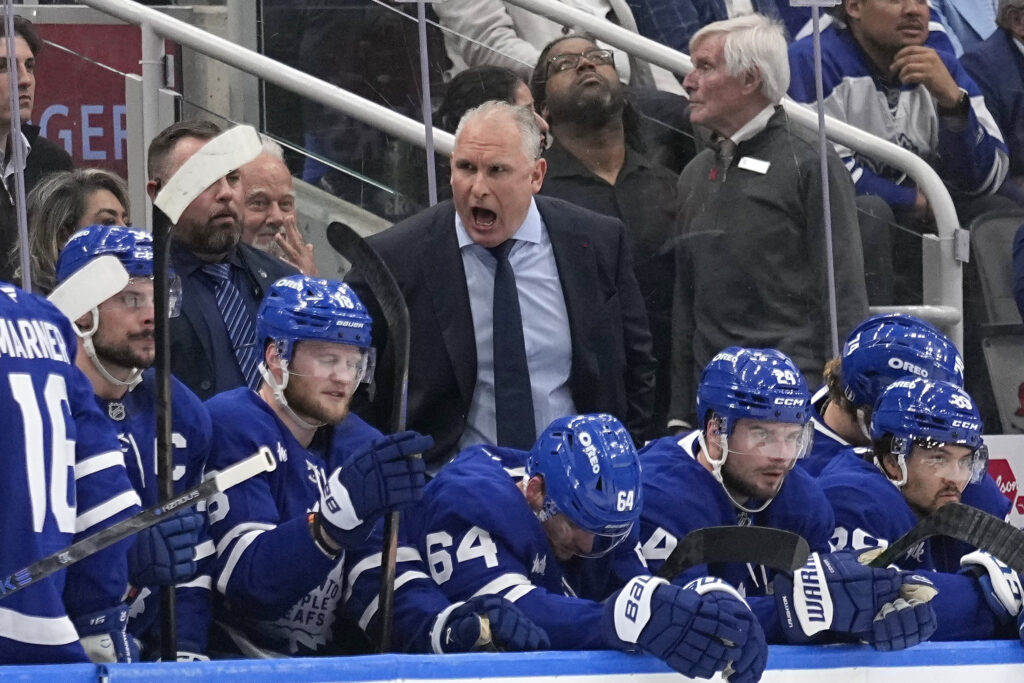The air in Toronto, for the first time in nearly a decade, feels different. It’s not the usual buzz of a fresh season, or the nervous energy of playoff hope. It’s a low hum of uncertainty, a kind of collective holding of breath as the city, and the organization itself, comes to grips with a new reality. The “Core Four” era, an experiment in high-priced talent and even higher expectations, has officially ended.
For nine straight seasons, the Maple Leafs followed a familiar, and ultimately fruitless, script. They’d rack up points in the regular season, dazzle with offensive firepower, and lull a fan base into believing this was finally the year. Then, with the stakes at their highest, the narrative would crumble in spectacular fashion. Now, after yet another first or second-round exit, the organization has finally done what many pundits and fans have been clamoring for: they’ve torn a piece from the heart of the core. Mitch Marner is gone, and with him goes a chapter of Maple Leafs history that was all flash and no substance.
The Cost of Staying the Course: A Retrospective on the Shanahan Era
To understand the current state of the Maple Leafs, you have to look back at the philosophy that guided the team for the better part of a decade. When Brendan Shanahan took over as president, he inherited a franchise in disarray. He made bold promises and delivered on them, at least initially, by drafting the kind of high-end talent that had been missing for so long. Auston Matthews, Mitch Marner, and William Nylander were the crown jewels of a new era. John Tavares was the veteran who was supposed to legitimize the group. The plan was sound on paper: build around elite skill and let their talent win the day.

But the Shanahan regime’s unwavering belief in this group became a fatal flaw. They shielded their stars from accountability, refusing to make a hard choice even as the same problems repeated themselves year after year. The salary cap, which ballooned with the massive contracts given to the core, left the team with little room for the kind of depth that wins in the playoffs. While other teams, like the back-to-back champion Florida Panthers, were built on a foundation of immense talent and immense depth, the Maple Leafs were top-heavy and brittle. The result was a recurring nightmare of playoff failures, culminating in a dismal record in winner-take-all games—0-6 in the “Core Four” era.
The Shock and Awe of Marner’s Departure
The trade of Mitch Marner to the Vegas Golden Knights for Nicolas Roy was a seismic event, a clear and decisive move by general manager Brad Treliving, hired in 2023, to “shake up the core.” The move wasn’t about simply getting rid of a player; it was about tearing down a monument to past failures. Marner, a prolific playmaker who put up 102 points last season, was a lightning rod for criticism. His offensive genius in the regular season was often overshadowed by a conspicuous lack of production when it mattered most.
Trading him certainly comes with risks. The team will undoubtedly miss his offensive production and defensive responsibility, especially in the regular season. But the return of cap flexibility is an invaluable asset for a team that has been hamstringed by cap issues for years. The addition of players like Matias Maccelli and Dakota Joshua adds much-needed depth and grit, a welcome change from the high-flying, low-impact forwards that characterized the last regime. The move signals a new direction: less reliance on a few superstars and more of a focus on building a cohesive, hard-working team.
The Future of the Remaining Core
While Marner’s departure is the headline, the status of the remaining core players is equally critical. Auston Matthews and William Nylander, both protected by no-movement clauses, aren’t going anywhere. This is a blessing and a curse. You don’t trade players with their offensive abilities, but their contracts and control over their destinies still present challenges. Matthews, in particular, is the key to everything. After a down year where his goal production plummeted from 69 to 33, a healthy and productive Matthews is non-negotiable. The team needs him to be a legitimate Hart Trophy contender and carry the offense, especially without Marner.

Nylander may have to take a step, too. With Marner gone, the scoring has to be replaced somehow. A return to his 98-point production from 2023-24, after recording 84 points last season, is almost a necessity. Meanwhile, John Tavares will have to fend off Father Time for a little longer and remain an impactful player in the top six.
The Talent Shortage: A Look at the Prospect Pool and Draft History
The end of the Core Four era isn’t just about the players who are gone; it’s also about the players who were never there. While the Shanahan regime’s first-round drafting was spectacular, with Matthews, Marner, and Nylander, the rest of their draft record from 2014-2018 was largely a wasteland. As a result of trading many of the prospects they did swing and hit on, they now have a thin prospect pool and a lack of young, talented players to support the core. The team is now short on draft picks and has few assets to trade. The Nicholas Robertson situation is a perfect example of this. A one-time promising prospect, he’s now in his second straight summer of trade speculation, with his offensive game failing to develop as hoped. The Leafs are now in a position where they have too many forwards, meaning they will likely need to trade usable forwards to restock their asset cabinets, a difficult position to be in for a team that has been so starved for depth.
A New Era, A New Hope?
The Shanahan regime is now over, with his contract not renewed in the spring. Treliving has already made the kind of difficult, decisive move that his predecessor, Kyle Dubas, was often unwilling to make. The additions of Maccelli and Joshua, plus the departure of Marner, signal a clear break from the past.

But this isn’t a quick fix. The on-ice deficiencies, the lack of draft picks, and the thin prospect pool are all significant hurdles. The team’s fate still rests on the shoulders of Auston Matthews and William Nylander. The path ahead is anything but certain. But for the first time in a long time, the Maple Leafs aren’t just rearranging deck chairs on the Titanic. They’ve finally decided to change the course of the ship. The “Core Four” era is over. The long goodbye is complete. Now, the real work of building a Stanley Cup contender can finally begin.
Created with the aid of Gemini AI
